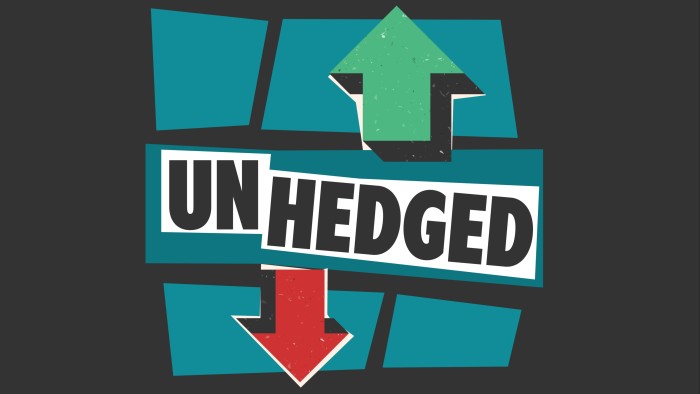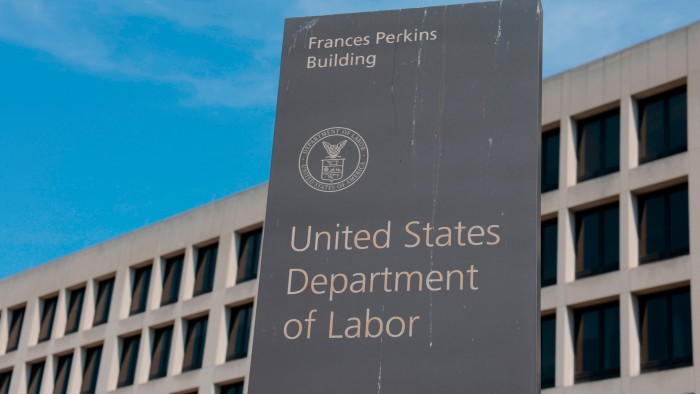This article is an on-site version of our Unhedged newsletter. Premium subscribers can sign up here to get the newsletter delivered every weekday. Standard subscribers can upgrade to Premium here, or explore all FT newsletters
Good morning. The race for the next chair of the Federal Reserve is heating up. According to President Donald Trump, the “Kevins” — Kevin Hassett, director of the National Economic Council, and Kevin Warsh, a former Fed governor — are the frontrunners. But Chris Waller, a current governor of the central bank, leads the pack on the betting markets Polymarket and Kalshi. Send us your pick: [email protected].
US economic data
Without reliable economic data, policymakers and investors resort to guesswork and gossip when making decisions. The US has historically been the gold standard for economic data. But Trump’s firing of Erika McEntarfer, head of the Bureau of Labor Statistics, has called the reliability of US figures into question. As is often the case, Trump is right that there is a problem, and wildly wrong about the specifics. Yes, there are some reasons to worry about declining US economic data quality. No, the problem is not that the numbers are “rigged”.
Most economic data releases, whether for jobs, inflation, or economic growth, consist of estimates. The “hardest” data sources — census numbers, state unemployment claims, and so on — come out later, and the early estimates are adjusted as they roll out. Recent payroll estimate revisions, particularly last week’s blockbuster negative 258,000 revision, have looked big, and have been mostly to the downside. Each figure in the chart below represents the net total revisions to all previous jobs estimates made in a given month:
But this is not a new issue. US economic data is still very reliable. Yet, ever since the pandemic, revisions to the jobs numbers have tended to be bigger. The mean and median absolute net revision — that is, the net size of the revision announced each month, whatever the direction — have been much higher over the past five years than before the pandemic:

Does the change reflect partisan bias against the president? Well, the median and mean net revisions in the Trump administration have been lower than the five-year mean and median, and lower than the mean and median during Joe Biden’s term.

The changes under Trump have been more negative, however: more than 70 per cent have been downward revisions, while the Biden years had a roughly 50/50 split.
Readers can decide whether they believe this imbalance is the result of a conspiracy at a government agency, in which a large number of people work independently to collect data using a well-understood process, and where the figures are continually checked for consistency with other data sources. Or, they might conclude the variation is normal statistical noise of the sort we see everywhere.
But the changes since the pandemic are genuinely concerning. The increase in the size of revisions since the pandemic has several probable causes. Tom Porcelli, chief US economist at PGIM, notes the response rate to BLS surveys has been declining for years and began to decline faster after 2020. The monthly job numbers are based on the current population survey (the unemployment rate) and the current employment survey (payrolls). Here are the response rates:

There have also been big changes in the US economy — broadly over the past 20 years, and acutely in the past five. Jed Kolko of the Peterson Institute, formerly under secretary for economic affairs at the commerce department, says:
. . . historically, you could report on very narrowly defined industries, and estimate productivity more easily than you can in an economy that is overwhelmingly services, where inputs and outputs are mostly intangible . . . The modern economy is harder to measure. A more recent reason for this is population growth. The growth rate has been more volatile than it has been for decades: the pandemic and immigration surge resulted in big increases and decreases to population growth…
The pandemic made measurement and modelling more difficult. For example, unemployment rose dramatically during the worst of the pandemic. But unemployment meant something different at that moment . . . To the extent that economic statistics include some estimation or imputation, [estimates] typically extrapolate from the recent past. When the economy is rapidly changing, the numbers that need to be estimated or modelled won’t be as accurate.
With lower responses and new modelling challenges, agencies that collect data need more resources: more people to chase down survey responses and build better models. But BLS’s budget declined 18 per cent in real terms since 2009, according to a report from the American Statistical Association. Things have worsened this year. The federal hiring freeze and the so-called Department of Government Efficiency’s reduction to federal payrolls have left data agencies without key experts and unable to replace employees who have left.
Consumer price index calculations, also done by the BLS, show the trend. This year, the bureau has stopped collecting pricing information in three metro areas. And the quality of the data in the remaining metros is declining. If a specific baseline price cannot be found at a specific store in a specific area — for example, milk in New York City — BLS statisticians will substitute that price with one for the same product in a different store in the same area — a “home cell” imputation. If there is no reliable price in the same metro area, statisticians use data from a different metro area — the price of milk from Boston, for example, or a “different cell” imputation. This can introduce inaccuracies. And the percentage of “different cell” imputations has been rising:

The overall quantity of imputation appears to be rising, too. In July, the agency said 15 per cent of the figures each month are no longer being collected, implying they are being imputed. According to Omair Sharif of Inflation Insights, that figure doesn’t include the loss of the data from three metro areas; add that in, and 19 per cent of the data is probably imputed. “Before the pandemic, only around 2.5 per cent of prices were being imputed. This is a big change . . . it’s hard to tell the magnitude, but the margin of error [in CPI reports] is certainly greater,” he said.
This situation is not hopeless. The quality of the data is still robust; more resources would go a long way; and the digital economy is yielding more private and alternative data sets, which some agencies are working to incorporate. “The more technology enables government agencies and private firms to track their own activity, the more data is theoretically available outside of survey methods,” says Kolko. And Thomas Ryan at Capital Economics notes that “the breadth of US economic data makes it difficult to fudge the overall picture . . . discrepancies would quickly emerge [across metrics].” If Trump continues to politicise the agencies, the damage may be limited.
The quality of US data is still high, but it is trending down. If the Trump administration wants to improve that, the solution is more resources, not scapegoating.
One good read
Foam freedom.
FT Unhedged podcast

Can’t get enough of Unhedged? Listen to our new podcast, for a 15-minute dive into the latest markets news and financial headlines, twice a week. Catch up on past editions of the newsletter here.
Recommended newsletters for you
Due Diligence — Top stories from the world of corporate finance. Sign up here
The Lex Newsletter — Lex, our investment column, breaks down the week’s key themes, with analysis by award-winning writers. Sign up here
